|
UFO Files & The World’s Strangest UFO
Stories
On Sunday, 15th January 2006,
two of the top documentary channels on television each launched a brand
new series devoted to the subject of UFOs. The History Channel began with
The UFO Files at 8pm and at 10pm, the Discovery Channel launched
The World’s Strangest UFO Stories.
Both shows picked
popular topics for their premieres and both programs had high production
values, although World’s Strangest had a jauntier, more humorous
approach to the subject. The fact that major ‘real-life’ documentary
channels chose to broadcast brand new series of this type clearly
demonstrates that the UFO subject is far from dead. In fact the
introduction to the Discovery Channel’s effort stated that ‘across the
planet, tales of extra-terrestrial encounters appear to be on the
increase’.
The UFO Files
began with Beyond The War of the Worlds and was less about UFOs
than it was about acclimating the general public to the existence of
extra-terrestrial life.

We were given a
history of science fiction, from the early days of astronomy to the
discovery that the planets in the sky were other worlds, separate, but
perhaps not dissimilar to the Earth. Nineteenth-century writers such as
Jules
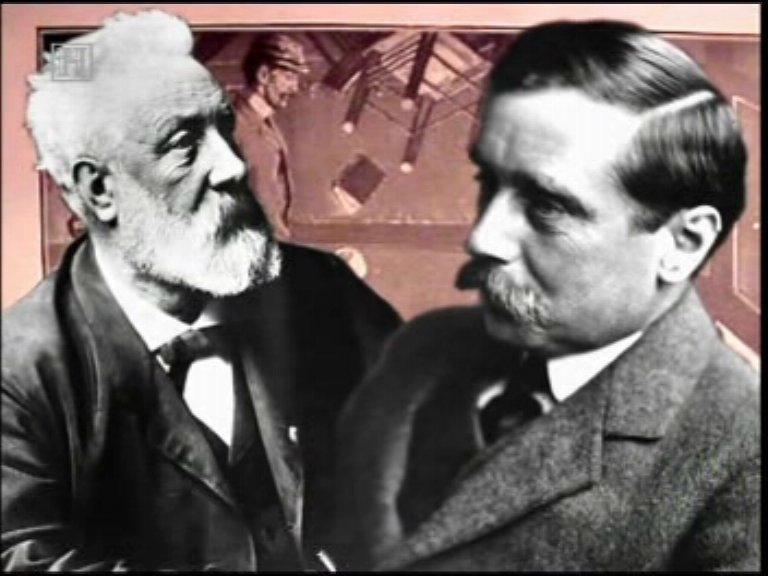 Verne
and HG Wells took the phenomenal advances of science at that time and
adapted them into speculative works of fiction and fantasy. Verne
and HG Wells took the phenomenal advances of science at that time and
adapted them into speculative works of fiction and fantasy.
In 1897, Wells
published his third book and The War of the Worlds became a popular
sensation. Its central idea that Martians invaded England, then the
world’s major superpower, and quickly decimated the might of the British
Empire sent shockwaves through society. His striding, metal tripods that
employed death rays and poison gas terrified the public and the book is
just as popular today as it was over a hundred years ago.
A hefty section
devoted itself to the infamous Orson Welles radio broadcast of 1938. This
adaptation of Wells’ novel had the Martians invading New Jersey
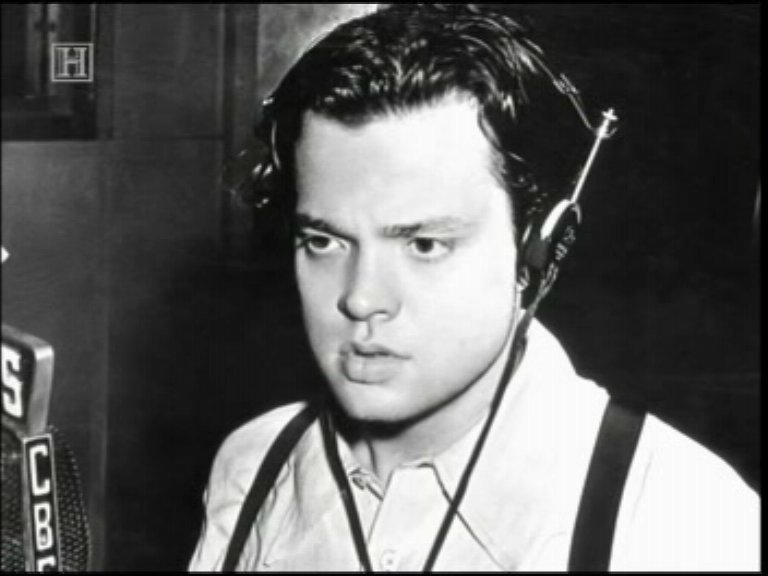 and,
with its use of the idiom of the ‘breaking news’ format, created panic
amongst sections of the American population. Orson Welles made a public
apology, but this did not prevent others from trying the same methods and
similar broadcasts in Ecuador in 1949, in which rioters killed 15 people,
and Buffalo, New York in 1968, still caused a great deal of concern. and,
with its use of the idiom of the ‘breaking news’ format, created panic
amongst sections of the American population. Orson Welles made a public
apology, but this did not prevent others from trying the same methods and
similar broadcasts in Ecuador in 1949, in which rioters killed 15 people,
and Buffalo, New York in 1968, still caused a great deal of concern.
With the launch
of unmanned probes to Mars in the Sixties and Seventies, humankind got its
first close-up views of the Red Planet. What we saw was a world pockmarked
with craters and with an atmosphere so thin that life as we know it would
be impossible.
Then in 1976, the
Viking Orbiter snapped what appeared to be a massive face on the Martian
surface. The Cydonia Face caused a sensation and many believed it was an
artificial construction. Later, more high resolution images from Mars
Global Surveyor seemed to prove that the Face was nothing more than a
mesa, a desert hill that simply looked like a face in a certain light. To
this day, though, many researchers still believe that the Face is a
remnant of some long-gone Martian civilisation.
The Viking
landers touched down on the desolate plains of Mars and performed
experiments that, at first, seemed to indicate the presence of life. These
findings from one experiment were discarded, however, but its designer, Dr
Gilbert Levin, stands by the results of the experiment to this day. This
was conveniently omitted from the program.
As NASA continues
its missions to Mars, building up to manned landings, it has become clear
that we are going to find nothing resembling Wells’
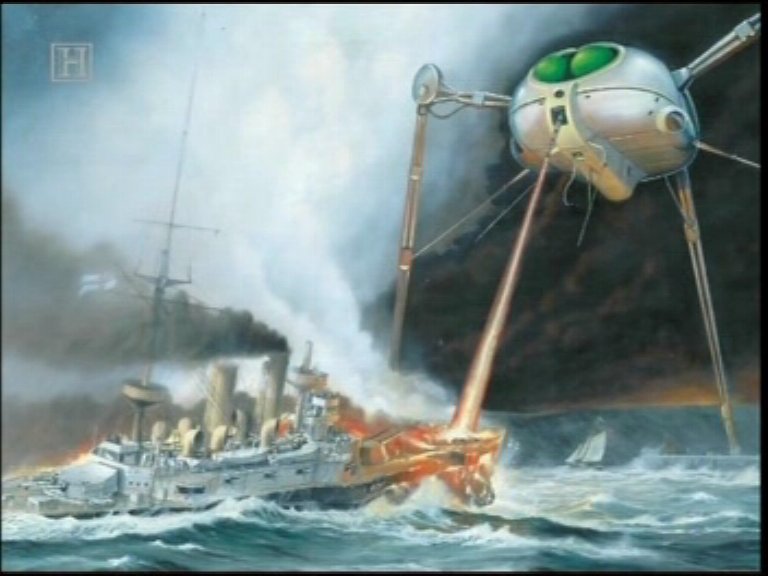 Martians
there. This has not diluted the love that people have for Wells’ The
War of the Worlds in any way, though. This year, Steven Spielberg
released his blockbuster version of the novel (although it was in reality
a remake of the George Pal 1953 movie) and in 2007, a CGI movie version of
the classic 1978 album, Jeff Wayne’s Musical Version of HG Wells’ The
War of the Worlds, is scheduled for release. Martians
there. This has not diluted the love that people have for Wells’ The
War of the Worlds in any way, though. This year, Steven Spielberg
released his blockbuster version of the novel (although it was in reality
a remake of the George Pal 1953 movie) and in 2007, a CGI movie version of
the classic 1978 album, Jeff Wayne’s Musical Version of HG Wells’ The
War of the Worlds, is scheduled for release.
While this
program provided a fascinating history of the impact of Wells’ novel, its
value as a UFO documentary is less impressive. It did show how the
population can be manipulated by the media into a frenzy of paranoia and
panic with the threat of an alien invasion.
The World’s
Strangest UFO Stories
began on the Discovery Channel at 10pm with a show entitled Roswell:
The Truth. Comedian, Mark Williams, hosted the show and it was a
light-hearted affair, despite the fact that it was a serious subject to
many of the people involved.
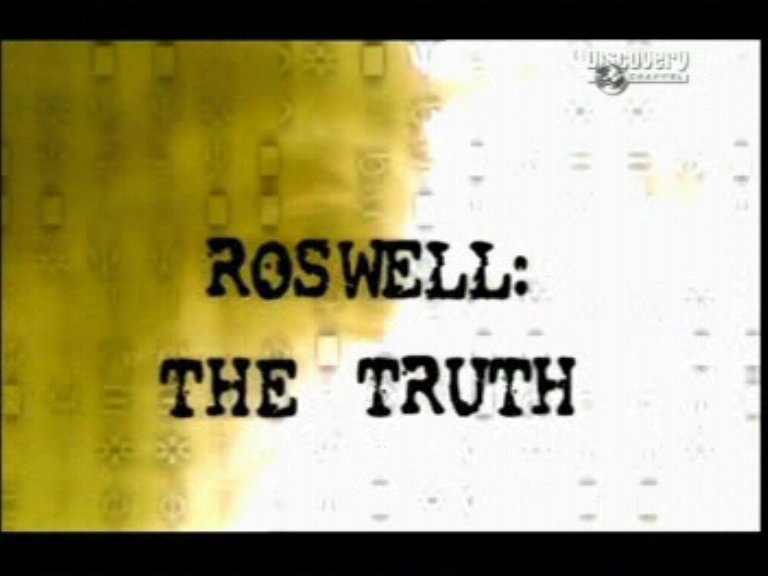
After a history
of the Roswell Incident, in which the Roswell Army Airfield (RAAF) issued
an official press release stating that a flying disc had been captured on
a ranch near the town of Roswell, New Mexico, we were introduced to
Stanton Friedman, the man that brought the incident back into the
limelight in 1978.
He told how he
interviewed the intelligence officer of the RAAF, Major Jesse Marcel, and
how he was informed that it was no weather balloon that crashed that
fateful day in July, 1947, but a craft from another world. Marcel’s son,
also named Jesse and now a flight-surgeon in the US Air Force, also told
how he handled pieces of debris from the crash and that it was not from a
balloon, top secret or not.
Thus began a
rollercoaster ride of theories and speculation and debunking from such
people as Nick Redfern, Dave Thomas, Tom Carey, Don Schmitt and even the
townsfolk of Roswell themselves.
We heard about
Project Mogul, a top secret project using balloons to carry huge trains of
sensors into the sky to detect Soviet nuclear tests (even though the
Soviets didn’t detonate their first atomic bombs until 1949). We heard
about alien bodies being recovered and how the families of those involved
were threatened into silence.
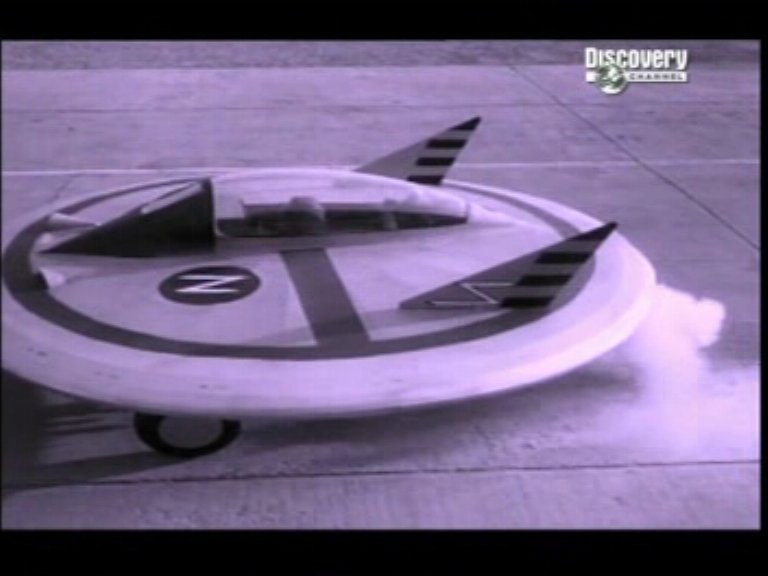 We
heard about experiments with Nazi technology and poor monkeys being
sacrificed in such tests. We heard about multiple UFO crashes on that day.
And we heard how UFO researchers are ‘cashing in’ on the story, while
sceptics bemoan that they cannot demand a thousand dollars per lecture. We
heard about experiments with Nazi technology and poor monkeys being
sacrificed in such tests. We heard about multiple UFO crashes on that day.
And we heard how UFO researchers are ‘cashing in’ on the story, while
sceptics bemoan that they cannot demand a thousand dollars per lecture.
We were treated
to footage of Ray Santilli’s alien autopsy film and told how it still
cannot be completely debunked.
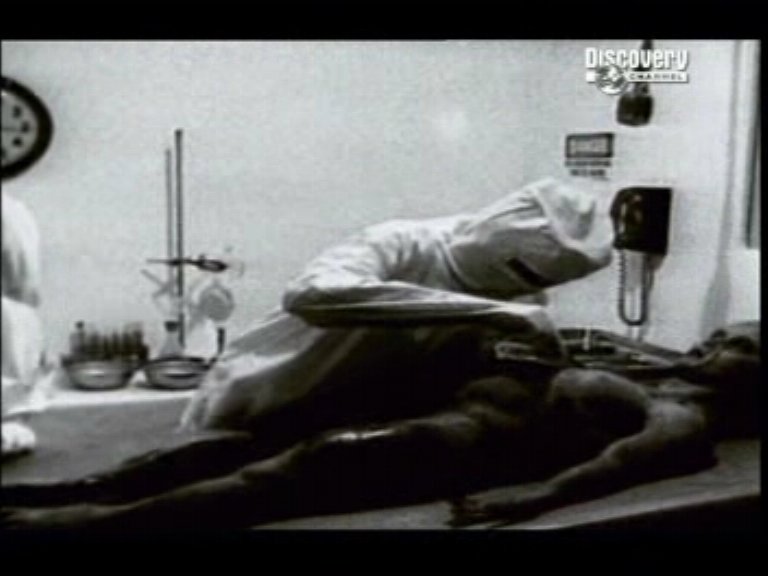
Two official,
government reports explained away the incident in various ways utilising
several projects that spanned many years, as proof. It was all a case of
mistaken identity, wasn’t it?
The show ended on
a positive note. Roswell thrives on the publicity and subsequent tourism
dollars. Ultimately, Williams said, if you believe that the Roswell
Incident is a load of rubbish, then you have to believe that the people of
the town that claim an alien spacecraft crashed there are either terribly
mistaken or that they are lying – every single one of them… “and that’s
very hard to do.”
For a show called
Roswell: The Truth, few truths were uncovered. But that’s hardly
surprising as the story has become more and more complex over the years.
It did its level best to report what happened in an entertaining format
and I think it did a good job. Sceptics and believers alike were given a
fair shake of the stick and eventually, we are left to make up our own
minds – which is how it should be.
Both series
continue on their respective channels and we’ll bring you reviews and
comment as they air.
All images are
the property of their respective copyright owners and are used here solely
for review purposes.
© Steve Johnson –
2006 |